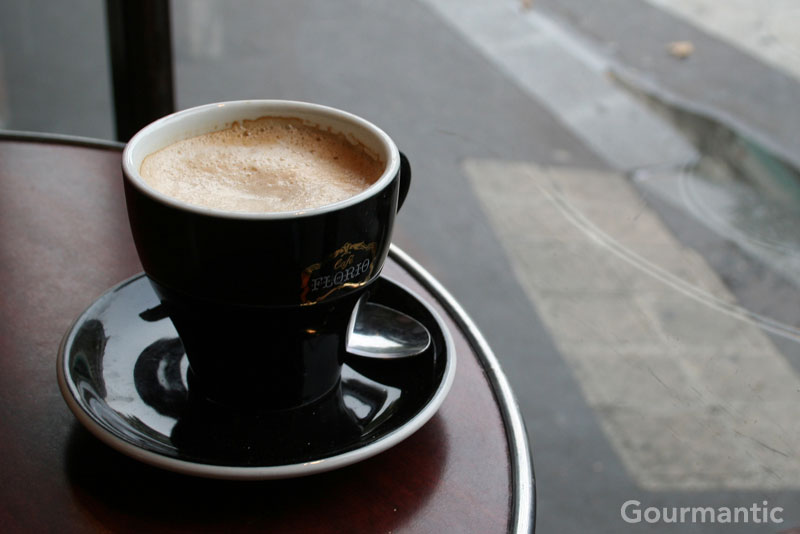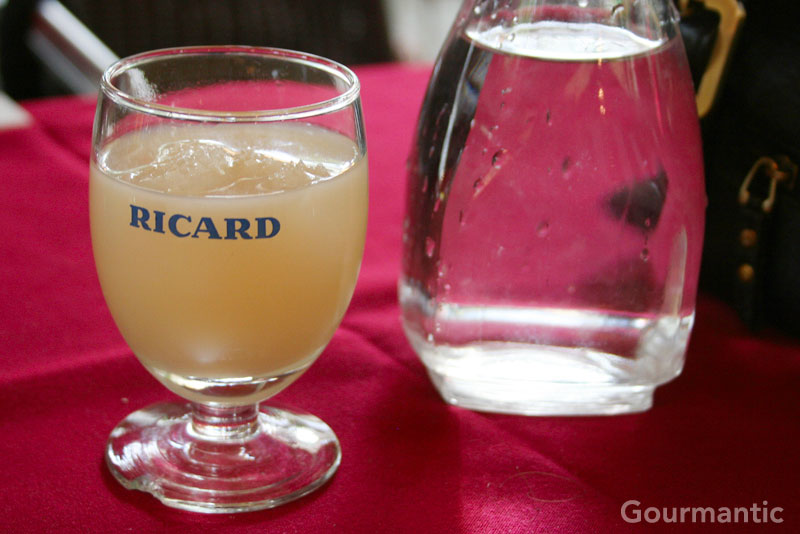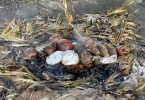We continue with Part 3 of the Paris Guide for First Time Travellers. You can catch up on Part 1, What to See in Paris and Part 2, Things to Do in Paris.
When it comes to eating and drinking in Paris, one can dedicate a lifetime. For the first time visitor, it is the start of a journey that amounts to memorable food discoveries.
There is more to eating in Paris than the quest for an authentic croissant, baguette or pain au chocolat in a quintessentially Parisian café. There are haute cuisine establishments where you leave yourself in the hands of inventive chefs and their creations. And there is popular dining in restaurants, bistros, brasseries and cafés with an emphasis on regional cuisine.
This article is divided into two sections: What to Eat in Paris and What to Drink in Paris.
What to Eat in Paris
Petit Déjeuner
Breakfast in Paris is best enjoyed in a café. You can make like a Parisian and take your café standing up at a bar, or sit down for a petit déjeuner parisien, complete with jus d’orange, café crème, croissant, buttered tartine and jam. Alternatively, there are many pâtisseries and boulangeries where you can buy viennoiseries and take them home to eat if, for example, you are staying in rental accommodation.


Café crème (L) Croque-Monsieur (R)
Déjeuner
For a light meal or lunch, order a croque monsieur, grilled ham and cheese sandwich with the cheese melted on the outside or a croque madame, same as a croque monsieur with an egg on top. They usually come with a salad.
Salade composée is a mixed salad with cooked and fresh vegetables and includes assorted meats, chicken or fish. Salade gourmande is another mixed salad which has foie gras. There are also crêpes with a variety of sweet and savoury fillings.
Entrée
For entrée, try the soupe gratinée à l’oignon. This hearty and filling starter is what is known commonly as French onion soup.
Escargots à la bourguignonne are snails cooked in butter, garlic and parsley. They come served in their shell and you are given escargot tongs and a pick to get them out. Don’t be shy about mopping the left over garlic butter with your bread.


Escargots à la bourguignonne (L) Soupe gratinée à l’oignon (R)
Not always found on menus, soupe de poisson is a traditional fish soup served with croutons and rouille, a thick sauce made with garlic and peppers.
Foie gras is a gourmet’s delight. The fattened goose or duck liver served with toast and best enjoyed with a glass of Sauternes. When in season, and during months with an ‘r’ in them, try les huîtres preferably fines de claires. The oysters are shucked on demand and taste of the sea.


Foie gras (L) Huitre, fine de claires (R)
Main Courses
While it is difficult to pinpoint the quintessential dish of Paris, there are several regional dishes that have made their home in Parisian restaurants.
Try the Confit de canard, duck leg preserved in its fat, pan-fired and served with potatoes cooked in duck fat. The dish is not as heavy as it sounds but if you prefer a lighter alternative, there is Magret de canard which is the breast of duck.
For meat lovers, Châteaubriand is a beef tenderloin steak. Boeuf bourguignon is beef stewed in red wine with bacon, mushrooms and onions. Daube de boeuf is a tender beef stew sometimes served in a cocotte.
Coq au vin is a cockerel cooked in red wine. Cassoulet is a hearty dish of white beans, duck or goose confit, pork and sausage slowly cooked over an extended period. Choucroute alsacienne is fermented sauerkraut poached with a variety of meats.
Boudin noir is a tasty blood sausage made with pork. Andouillette is another sausage made with pork, tripe and other types of offal.
For a side dish, try aligot, gooey mashed potatoes with Cantal or Tomme cheese and garlic.
Often difficult to find on menus, Bouillabaisse is a tasty fish stew served with rouille. Lotte, monkfish or stargazer, is a fish that has the texture of lobster. Equally difficult to find is Brandade de morue, delicious a salt cod dish made with potatoes.
If you happen to be in Paris during truffle season, keep an eye out for truffes in restaurant menus.
Seafood lovers can indulge in a plateau de fruits de mer, a seafood platter with langoustines, oysters, crab, surf clams, prawns, cockles, whelks, winkles and other rare shellfish. Restaurants have an écailler outside whose job is to shuck these beauties once you place your order. This is seafood decadence worth every euro.


Plateau de fruits de mer (L) Daube de Boeuf (R)
Le Fromage
In France, the cheese course is served before dessert. In high end restaurants, they wheel in cheese platters. Venture beyond the familiar Brie de Meaux and Camembert and try fromages fermiers, cheese that is made using traditional techniques from herd on farm property as opposed to being mass produced.
In the Triple Cream/Double Cream varieties try Boursault and Brillat-Savarin. For washed rind cheese, select from Epoisses, Livarot, Pont-l’eveque. For goats cheese (chèvre), try Crottin de Chavignol, Chabichou de Poitou, Cabécou, Sainte Maure de Touraine. Vacherin from the Savoie, Saint-Marcellin from the Dauphiné region and Tomme are worth tasting. For blue cheese, unpasteurised Roquefort is a treat, as are Fourme d’ambert and Bleu de Bresse.
Le Dessert
Top picks for desserts are oeufs a la neige which are snow eggs, ile flottante, a floating island of soft meringue in a pool of crème anglaise, tarte tatin, an upside down apple tart, crème brulée and chocolat or café liègeois.


Coupe de fraises (L) Crème brulée (R)
Boulangeries – Pâtisseries – Chocolateries – Salons de Thé
For artisan bread, go to Lionel Poilâne boulangerie at 8 rue du Cherche Midi (6ème). For the best glaces/ice cream in Paris, you can’t beat Berthillon at 31 rue Saint-Louis en l’Ile. For the best hot chocolate, you can’t go past the chocolat chaud from Angelina at 226 rue de Rivoli (1er) and a Mont-Blanc dessert. For a tea experience unlike any other, go to Mariage Frères at 30 Rue Bourg Tibourg (11ème) in the Marais.
Chocolate aficionados will enjoy La Maison du Chocolat (various locations). Macarons lovers can make a bee line to Ladurée Champs-Elysées or Ladurée Bonaparte on the left bank. Also famous for macarons are Pierre Hermé, in 72, rue Bonaparte and Gérard Mulot at 76 rue de Seine (6ème). Keep an eye out for canelés, little cakes with a caramelised crust and a soft chewy centre.
Fauchon at 26 place de la Madeleine (8ème) is a gastronomy temple that is also famous for éclairs. Sadaharu Aoki has an unusual range of Japanese-inspired patisseries at Lafayette Gourmet. Lenôtre (various locations) is considered to be a maitre patissier and don’t miss out on La pâtisserie des rêves at 93 rue du Bac, (7ème) with patisseries are displayed under glass bells.
More information on Where to Eat in Paris in our comprehensive Restaurant and Bistro Guide .
What to Drink in Paris
L’heure de l’apéro
Aperitif hour is a civilised way to ease into the evening, and the French take it seriously. You can start with a glass of Champagne or vin mousseux, a sparkling wine that isn’t from the Champagne region but there are other choices to tempt you.
Kir royale is an aperitif made with crème de cassis and sparkling wine. Kir, is made with crème de cassis and white wine. Pernod or Ricard are aniseed based drinks that turn cloudy when mixed with water. Pineau des Charentes is a sweet apéritif made by adding Cognac to unfermented grape juice. Pousse Rapière is a liqueur made with Armagnac. Floc de Gascogne is made by adding Armagnac to grape juice. Lillet Rouge is an interesting blend of wine, liqueurs, herbs and fruit.
Bière pression means beer on tap. Kronenbourg 1664 is a French brew from Alsace. For a non-alcoholic drink, Badoit mineral water is refreshing with a light fizz.


Lillet Rouge and Kir Royale (L) Pastis (R)
Cocktails
For cocktails, Forest Collins of the renowned 52Martinis blog provides detailed reviews of the best bars in Paris by arrondissement. Her current favourites include Sweethearts (a riff on a Margarita) or Maurizzos (Champagne Mojitos with just a dash of balsamic vinegar) at La Conserverie. For more serious ‘adult’ cocktails, she enjoys a crisp, clean gin Martini or l’Oscar Wilde (whiskey, red vermouth, Angostura bitters) at L’Hotel.
For something a little unusual, try a combination of cocktails and macarons from Bar Ladurée at Ladurée on the Champs-Elysées.
Wines
When it comes to French wine, terroir is of utmost importance.
From the Loire, choose from Vouvray, Muscadet, Sancerre, Pouilly-Fumé, Saumur, Muscadet-Sèvre-et-Maine and Chinon. From the South of France, choose from Cahors, Côteaux du Languedoc and Rosé de Provence. From Alsace, try a Gewurztraminer or a Riesling.
From the Rhone, pick from Côtes du Rhône, Châteauneuf-du-Pape, Vaqueyras, Gigondas, Crozes Hermitage. From Bourgogne (Burgundy), choose from Pommard, Beaujolais Village, Côtes de Nuit Village Échezeaux, Vosnes-Romanée, Beaujolais and in the whites, Chablis or Pouilly Fuissé. From Bordeaux, there are fine wines from St Emilion, Entre-Deux-Mers, Médoc, Pomérol, Graves and Margaux.
For sweet wines, treat yourself to a Sauternes, Muscat Beaumes de Venise, Jurançon, Banyuls, Monbazillac, Muscat de Rivesaltes or Barsac.
Un pichet de vin gets youa pitcher of wine, usually it’s a table wine. In the cooler seasons, you can find vin chaud or mulled wine, and a hot toddy they call grog au rhum.
Digestifs
After a grand meal or in good company, a little digestive drink is often in order. There are many Cognac houses to choose from, Marc de Bourgogne (made from grape residue after grape pressing), Calvados (made from apples) or go all the way and indulge in a vintage Bas-Armagnac.

Santé et Bon appétit!
Previously in the Paris Guide for First Time Travellers: What to See in Paris, Things to Do in Paris
Next in the Paris Guide for First Time Travellers: Paris Travel Tips and Advice






[…] in the Paris Guide for First Time Travellers: Things to Do in Paris, What to Eat and Drink in Paris, General Tips and Advice Ms Gourmantic (Corinne) has a strong penchant for packing a laptop, a […]
[…] This post was mentioned on Twitter by Hildegarde Jefferson, Ms Gourmantic. Ms Gourmantic said: [New on G] What to Eat and Drink in Paris – Part 3 of #Paris Guide for First Time Travellers http://bit.ly/fgQeR5 #travel #food #drink […]
Wow, you certainly saved the best for last! Awesome information and love that you added so much about what drink, too. Now, you’ve made me very hungry for magret de canard or cassoulet….so I’ll probably be fares to Paris shortly 🙂 Great post!
Kathy, that was a little torturing to write! I lost track of how many times I made myself hungry and thirsty, then nostalgic for Paris. I’m very pleased you enjoyed it, thank you 🙂
[…] in the Paris Guide for First Time Travellers: What to Eat and Drink in Paris, General Tips and Advice Ms Gourmantic (Corinne) has a strong penchant for packing a laptop, a […]
Great article! RT @Gourmantic: What to Eat and Drink in Paris: Guide for First Time Travellers (Part 3) http://bit.ly/fgQeR5 #paris #food
This comment was originally posted on Twitter
Funny – I just woke up at 5am this morning with a bout of insomnia – and one of the first things that came to mind as I lay there in bed unable to sleep was “I’d really like some aligot right now!” strange thought for that hour, then I flipped on my computer and read about on your post. Must be a sign…i need aligot! 🙂 Great run down on eats and drinks. And, thanks for the shout out!
Oh, now that’s too funny! Aligot of all things… I haven’t eaten it in a good few years but still retain a vivid memory of the occasion.
You’re most welcome 🙂 And thank you for your input and for keeping such a fabulous blog!
Top resource and not just for first time visitors. I’m impressed!
Must have been a labour of love for you to eat/drink your way in Paris 🙂
Thanks Chris. Writing this guide brought back memories of each dish we’ve eaten in Paris over the years! As you know, this is not just a compilation but a guide based on our culinary experience, and it has made me yearn for more!
This is the place to come if one wants to go to Paris! Thanks for the information.
Thanks Quay Po and welcome. Glad you found it informative 🙂
Fantastic compilation Corinne. Love it! I took Culinaria France with me when I went traveling in France, to make sure I didn’t miss out. This list would have made a much lighter version 🙂 I have to say one thing though, I wouldn’t go for a bouillabaisse in Paris. You have to save that for Marseilles 🙂
Absolutely! And in all my visits I’ve never seen Bouillabaisse on the menu in Paris. We went to Marseilles for lunch many years and ate bouillabaisse around Le Vieux Port and I still have a hankering for it…
Glad to be a little lighter than Culinaria France, which incidentally is on my bookshelf next to Culinaria Italy 🙂
That cafe creme and croque monsieur are calling my name! What a thorough list, Corinne. I’m taking it along whenever I get to on a plane to Paris!
That’s wonderful, thank you! I hope you enjoy ticking off items the list as much as I enjoyed eating my way around it!
I love the rose from Provence, reminds me of traveling there when I was 16 and legally allowed to drink 🙂
As much as I tried elsewhere, I’ve only ever enjoyed a Rosé in Tahiti! Perfect weather for a very light wine.
[…] miss our Paris Guide for First Time Travellers: What to See in Paris, Things to Do in Paris, What to Eat and Drink in Paris and General Advice and Tips. Ms Gourmantic (Corinne) has a strong penchant for packing a laptop, […]
[…] While personal circumstances prevented us from travelling this year, popular articles such as where to eat in Paris, what to wear in Dubai, afternoon tea at Burj al Arab in Dubai and the Passe Navigo Découverte […]
[…] 200g Cape Grim Eye Fillet ($35) is a dish that reminds you of Paris bistros. Perfectly cooked medium-rare, it allows the natural flavours of the pasture-fed meat to dominate. […]
[…] ** All food photographs taken in Paris Restaurants […]
[…] This concludes our Paris Guide for First Time Travellers series which features What to See in Paris, Things to Do in Paris, What to Eat and Drink in Paris. […]